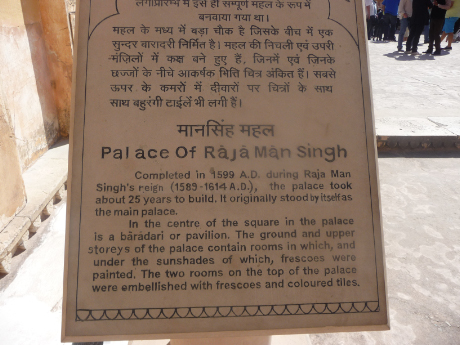 |
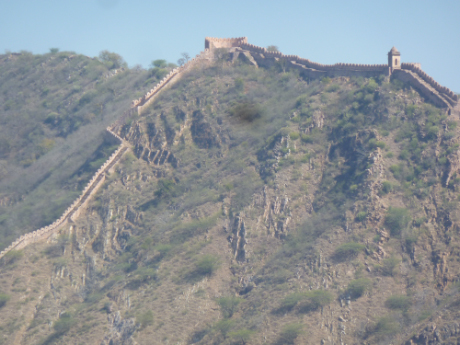 |
India is full of palaces and forts (often the same thing), as is reasonable in a country that has been invaded frequently and been divided into many small principalities. This one dates from the 16th century.
|
Beyond the fort itself is a structure that looks like a smaller version of the great Wall of China. It served the same purpose: to keep the bad guys out. |
 |
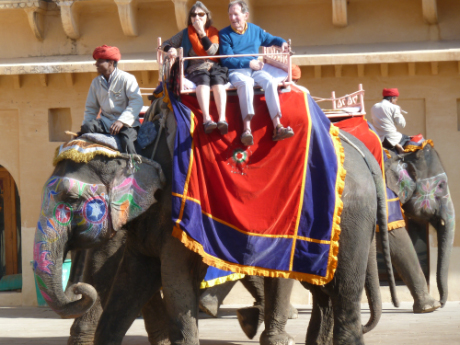 |
The fort stands on a hill next to a large river; an ideal setting for such a structure.
|
Getting from the river to the fort was a steep climb. Many people rode elephants, but Girish said that the tour company felt that they were not always well treated, so we took jeeps to the top.
|
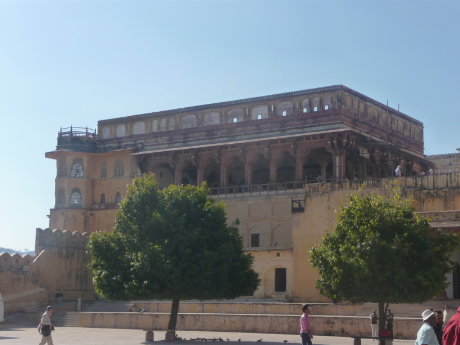 |
 |
The fort is a complex of massive buildings.
|
|
 |
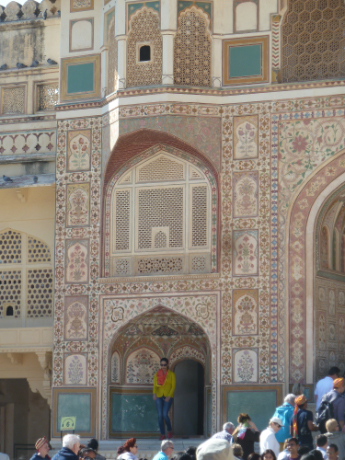 |
As we worked our way up, the buildings became more ornate as we approached the main structures.
|
This was our first introduction to the remarkable decorative art of inlay work that plays such a major role in Indian art. And yes, Elvis is leaving the building.
|
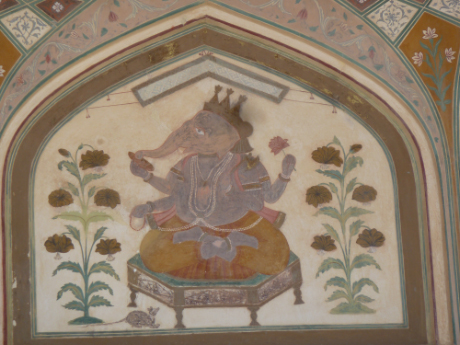 |
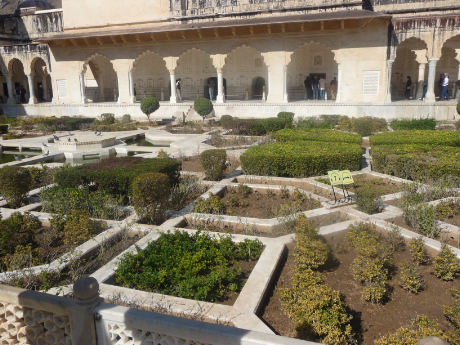 |
This is Ganesha, the Hindu patron god of learning, the arts and sciences, and of prosperous undertakings. No wonder he is worshipped not only by Hindus but by Jains and Buddhists as well. His image is over the main door.
|
Along with the buildings the fort has elaborate gardens surrounded by porticos to provide a cool area during the hot summers. |
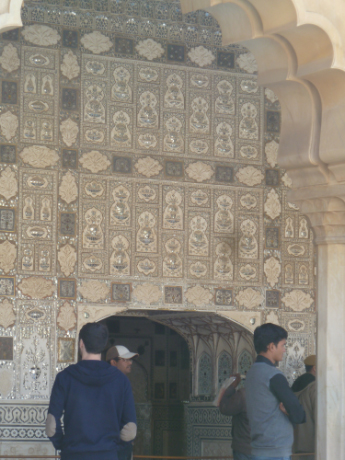 |
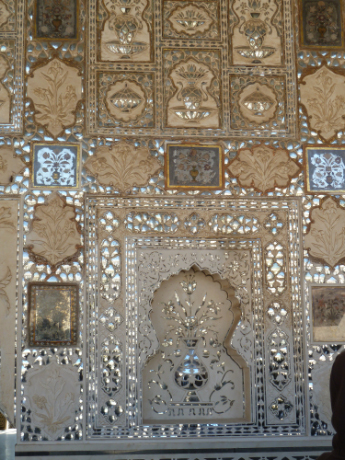 |
A feature of the Man Singh Palace is the Hall of Mirrors, where much of the inlay work consists of mirrors and highly polished metal. The outside of the building is covered in reflective surfaces that change with the angle of the sun.
|
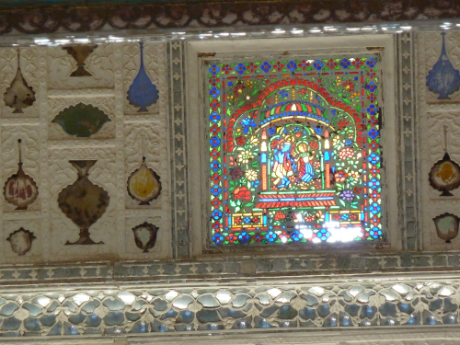 |
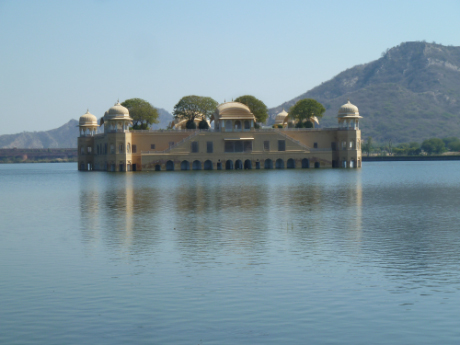 |
Inside the Hall of Mirrors are more reflective surfaces along with inlays of semi-precious stones and stained glass windows, creating a jeweled effect.
|
Since it gets so hot in the summer in Rajasthan, the Maharaja also had a small summer retreat built in a lake. |
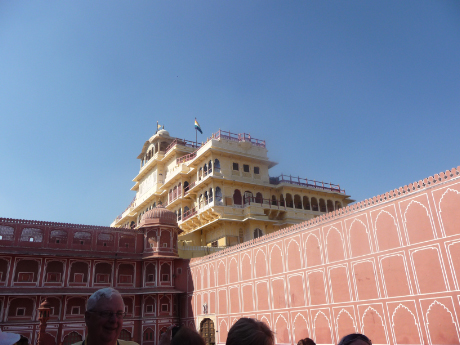 |
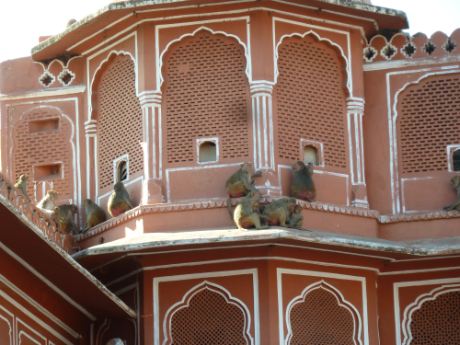 |
| While in Jaipur we visited the Amber Fort. It is easy to see why Jaipur is called the Pink City. The white section of the fort is now the home of the descendants of the last Maharaja of Jaipur. |
Everywhere we went there were monkeys. They charm the tourists but are considered by the Indians to be great pests. This troop was actually damaging the fort by pulling off wires and insulators from the walls.
|
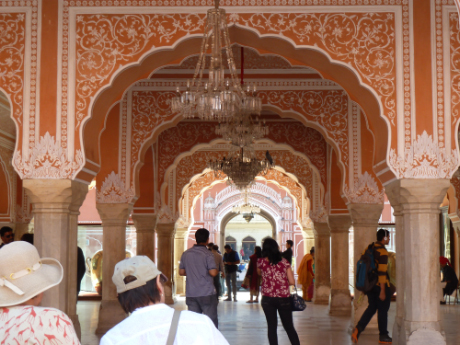 |
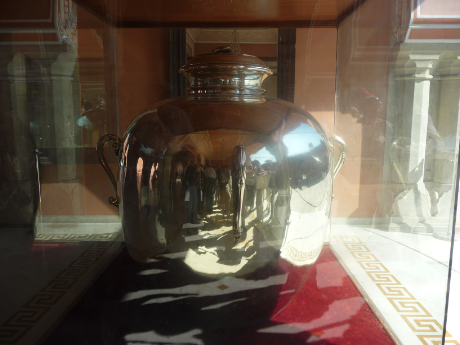 |
| The Hall of Audiences was lavishly decorated (and well-maintained) in a very traditional Indian style. |
These large silver urns were used by one of the maharajas to carry water from the Ganges with him for drinking and bathing when he visited England. He felt that the English water was not to be trusted. We laughed as we swigged our bottled (NEVER tap) water.
|
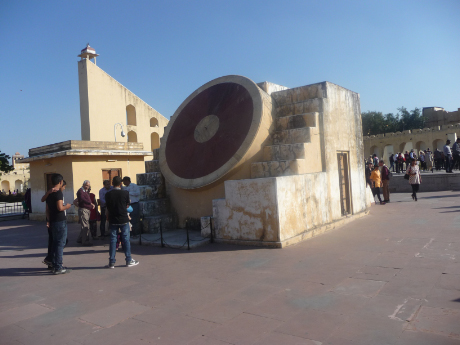 |
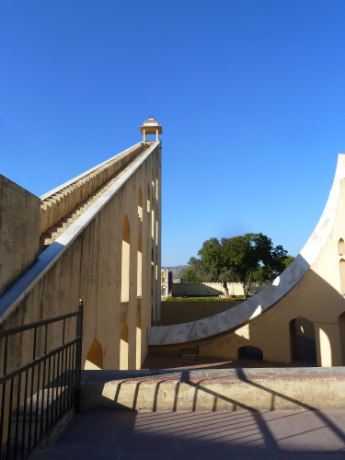 |
We also visited the Royal Observatory. The Indians are keen observers of the heavens and meticulous time-keepers, but almost entirely to make their horoscope-casting more accurate.
|
This is the world's largest sundial, accurate to within less than a minute when read by an expert. Before a couple can marry their families make sure that their horoscopes are similar. |
 |
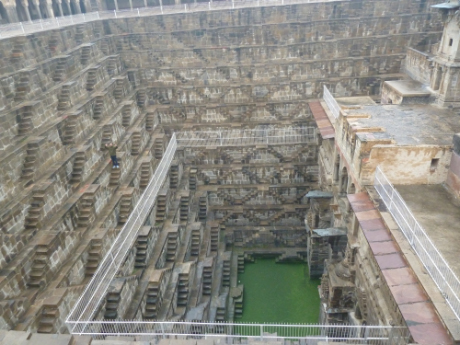 |
The Palace of the Winds in Jaipur is not open to the public, but it is magnificent from the street. Following their conquest by the Muslims, well-off Indians began isolating their women in the traditional Muslim manner. This palace was arranged so that the women could look out at the street without being seen.
|
This is a step-well, built by a ninth-century king to allow people (chiefly women) to get at water that was far below ground level. It also served as an assembly hall for the public. Girish is standing on a step to give you an idea of scale. Don't see him? Put your cursor over the picture. |
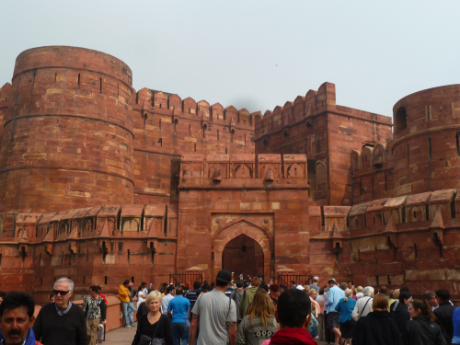 |
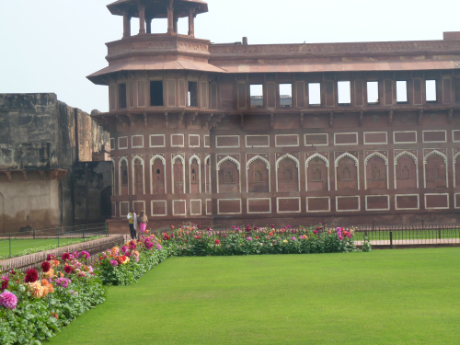 |
Agra Fort is another example of a heavily-fortified structure built by the Mughal (Islamic) rulers of India. The walls are extremely thick and the entry corridors twist several times to prevent a frontal assault.
|
Inside the fort, however, are large green areas with lovely flowers. In addition to other beautiful things, this fort was the first home of the Koh-i-Noor diamond. |
 |
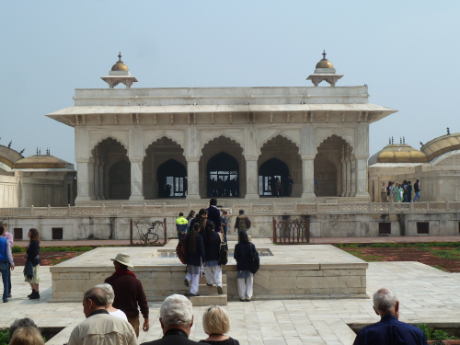 |
Most of the interior of the structure is brick, with decorative uses of marble. There are smaller palaces within the fort built of brick, limestone, or marble. Shah Jahan, the ruler who built the Taj Mahal for his wife, was imprisoned by his son in a tower here for the last years of his life.
|
The Hall of Audiences at Agra Fort looks like marble but is actually built of limestone fashioned to look like marble, because lesser Muslim rulers were not permitted to use real marble on their floors.
|
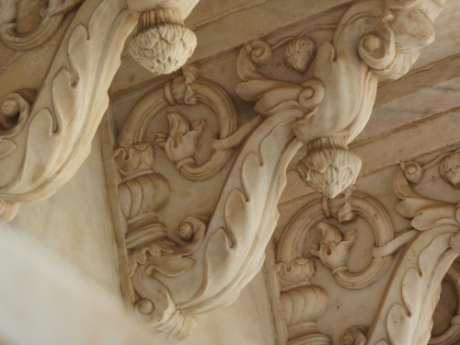 |
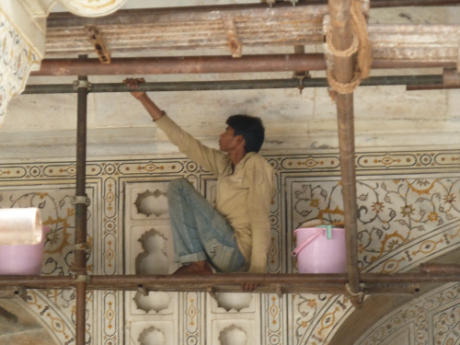 |
| The architecture is a fusion of Indian and Persian and the workmanship is excellent. |
Restoration and maintenance of these various monuments is an ongoing challenge for the Indian government, as it requires highly skilled workers and often expensive materials. |




